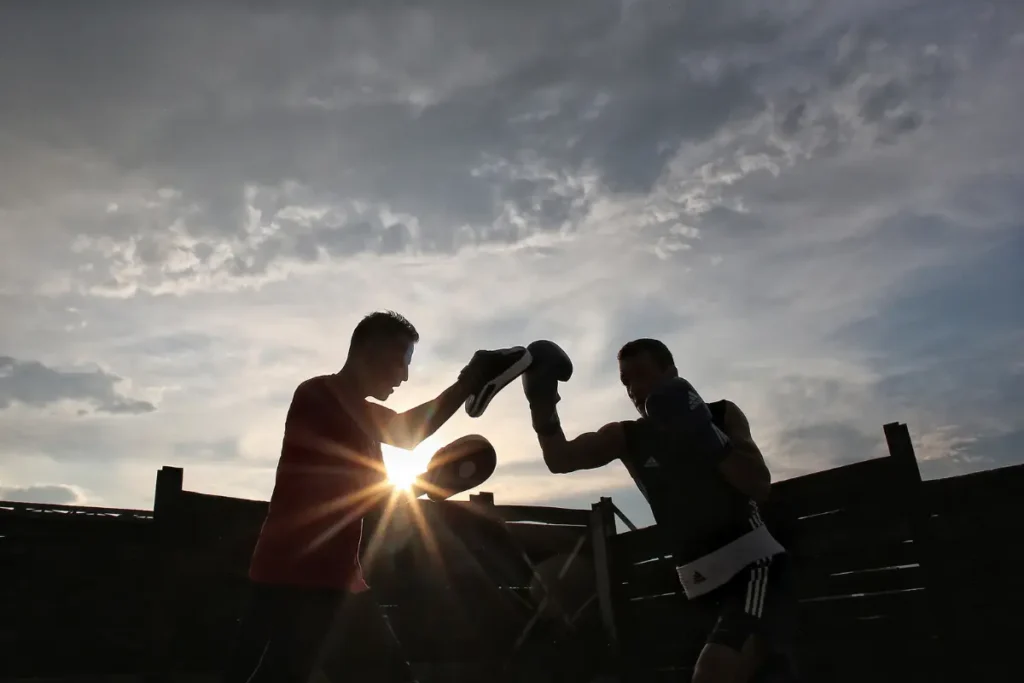If you’re eager to step into the world of boxing but don’t know where to begin, you’re in the right place.
Boxing is an incredible sport that not only keeps you physically fit but also sharpens your mental agility.
Whether you’re aspiring to become a professional boxer or just looking for a fun way to stay in shape, mastering the basics is essential.
In this article, we’ll explore eight fundamental boxing techniques for beginners, ensuring you start your boxing journey on the right foot.
The Stance – Your Foundation in Boxing
Your boxing journey begins with the proper stance. Think of it as the foundation of your boxing skills.
Stand with your dominant foot slightly behind your non-dominant foot, feet shoulder-width apart, and knees slightly bent.
Keep your guard up, protecting your face, and elbows close to your body. This stance allows for better balance and mobility.
The Jab – Your First Offensive Move
The jab is often referred to as the most important punch in boxing. It’s a quick, straight punch thrown with your lead hand.
Use it to gauge distance, keep your opponent at bay, or set up more powerful punches. Snap your jab out and back swiftly, maintaining a tight defense.

The Cross – Power in Your Rear Hand
The cross is your power punch. It’s thrown with your rear hand and is a straight punch like the jab.
Rotate your hips and shoulders to generate maximum power while maintaining your guard. This punch can be a fight-ender if executed correctly.
The Hook – Adding Angles to Your Arsenal
The hook is a powerful side punch, usually targeting the head or body.
Keep your elbow bent at a 90-degree angle and pivot your lead foot while turning your hip and shoulder into the punch. This technique adds angles and versatility to your offense.
The Uppercut – A Sneaky Inside Punch
The uppercut is a close-range punch that targets the chin or body. Bend your knees slightly and throw it upward, utilizing the power from your legs and hips.
It’s an excellent counterpunch when your opponent gets too close.
Defense – Protecting Yourself in the Ring
Defense is as crucial as offense in boxing. Master the art of bobbing, weaving, and blocking punches.
Slip punches by moving your head side to side, and block with your arms. Keep your hands up and your chin tucked, and always be ready to defend.
Footwork – The Key to Mobility
Footwork is often underestimated by beginners. Learn to move efficiently, maintaining your balance and distance from your opponent. Practice stepping forward, backward, and to the sides.
Your footwork can make the difference between winning and losing a match.
Sparring – Applying What You’ve Learned
Once you’ve honed your techniques, it’s time to step into the ring for sparring.
Sparring allows you to put your skills to the test in a controlled environment.
It helps you adapt to real-life situations and improve your timing and reflexes.

Conclusion
In conclusion, boxing is a challenging but incredibly rewarding sport. By mastering these eight fundamental techniques for beginners—stance, jab, cross, hook, uppercut, defense, footwork, and sparring—you’ll be well on your way to becoming a skilled and confident boxer.
Remember, practice makes perfect, so dedicate time to training and always prioritize safety.
FAQs
Q1: How can I improve my punching power in boxing?
A1: To enhance your punching power, focus on proper technique and strength training. Build your core and upper body strength, and practice generating power from your hips and legs.
Q2: Is boxing a safe sport for beginners?
A2: Boxing can be safe when practiced in a controlled environment with the right coaching and protective gear. Always prioritize safety and consult a medical professional before starting.
Q3: How often should I train as a beginner boxer?
A3: Aim for 3-4 days of training per week, including a mix of technique drills, sparring, and conditioning exercises. Rest and recovery are equally important.
Q4: Can anyone learn boxing, or is it just for athletes?
A4: Boxing is for everyone! It’s a great way to get in shape, build confidence, and learn self-defense skills, regardless of your athletic background.
Q5: What gear do I need as a beginner boxer?
A5: Essential gear includes boxing gloves, hand wraps, a mouthguard, headgear, and proper workout attire. Invest in quality gear to ensure your safety and comfort during training.

